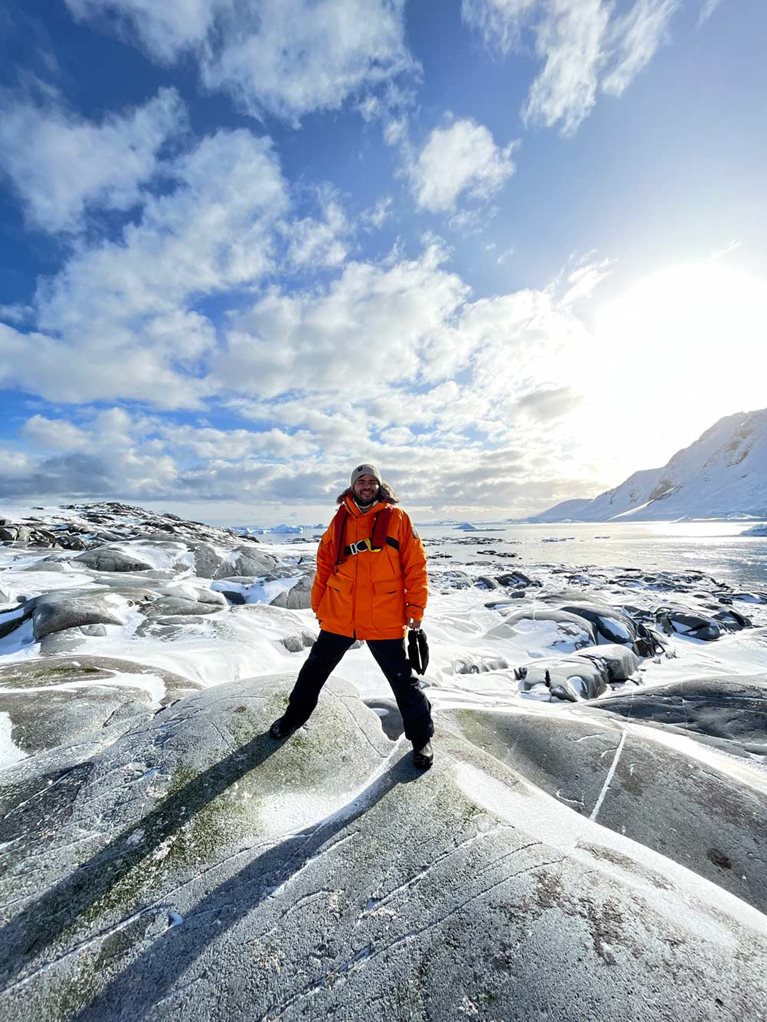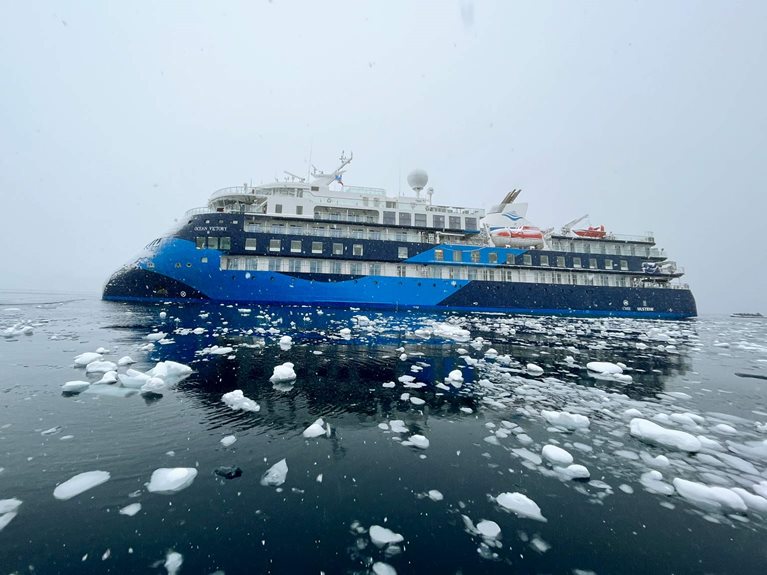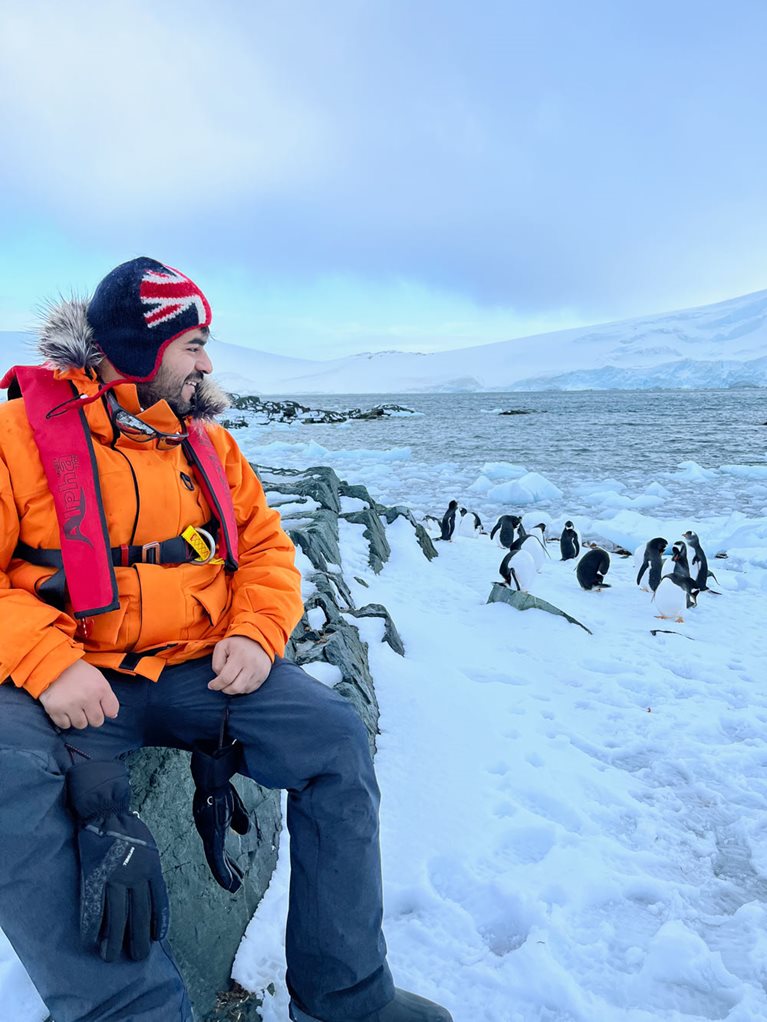Agam, a knowledge analyst based in our Gurugram office, has had a lifelong interest in sustainability and climate change solutions. As a member of McKinsey’s Service Operations team, he is currently working on developing a toolkit that helps clients unlock value with a strong environmental, social, and governance (ESG) proposition embedded in their corporate functions.
Recently, his passion for sustainability took him to the far end of the Earth—literally—in a twelve-day expedition to Antarctica. There he joined other change-makers from around the globe to learn about the continent’s fragile ecosystem, witness its vulnerability to climate change, and share strategies to become more effective sustainability advocates.
We caught up with Agam to learn more about the expedition and how it has impacted him.
Tell us about the organizers of this trip, the 2041 Foundation, and how you got involved.

Polar explorer Robert Swan OBE (Order of the British Empire) started the foundation in 1984. It gets its name from the year that an international moratorium on mining and other activities in Antarctica will be up for renegotiation. The foundation raises awareness about the continent as a natural reserve for science and peace. They organize yearly trips so people from all over the world can experience the Antarctic, learn about its significance to the planet, and network with others to protect it, largely through addressing climate change and identifying innovative sustainable solutions.
During a climate-change workshop in high school, I met a 2041 expedition alumni. Hearing about their experience was life-changing and made me realize going to Antarctica was a dream that was possible. Since then, almost everything I’ve done has led me in this direction, both in terms of visiting the continent and working on the topic of sustainability.
I applied for the trip in January 2021, was selected in April, then started fundraising, looking for sponsorship. I was also able use funding from McKinsey learning, a firm benefit that allows colleagues the opportunity to pursue education and professional development outside of work.
What was training for the expedition like?
We trained in Ushuaia, Argentina, for four days. We learned the basics of an Antarctic expedition—the gear, safety protocols, and details about the ship. We hiked a nearby glacier to acclimatize to the conditions we’d experience. We also attended a two-hour session on clothing, where we quickly learned we would need to wear four layers and a parka, with special boots and water-resistant pants.
How was the journey to Antarctica?

A bit frightening, honestly. The Drake Passage, between the tip of South America and Antarctica, is one of the most turbulent seas in the world. There were 168 of us, from over 30 countries, and most of us got seasick. For our safety, were not allowed outside of our cabins during the passage for fear we would get swept away. None of us had any issue respecting that rule!
Once we emerged from our cabins, we were witness to the most spectacular sunset over the polar ice. It was the first time I’d experienced snow, and it felt like stepping into Narnia. You know when Lucy enters the wardrobe and the fur coats become pine trees covered in snow? You feel like you are in a wonderland.
How long were you there? What were your days like?
We spent just over a week there, and each day was different from the one before. Small groups of us went off the ship in rubber Zodiacs. We saw whales and seals, and on land, there were glaciers, old whaling encampments, scientific outposts, and so many penguins.
When we weren’t exploring, we were on the ship attending learning and networking sessions. One session that sticks out was led by the chief climate change advisor at an oil and gas company. He walked us through the challenges the company faces as they transition to green energy. You realize that it’s not as easy as flipping a switch. We discussed topics like the new Intergovernmental Panel on Climate Change report, which focuses on the progress needed to stay below 1.5°C of global warming, and we shared what our organizations were doing around sustainability and climate, and brainstormed advocacy strategies.
Did you see the effects of climate change firsthand?

Yes—while we were there, the Conger ice shelf, which is about the size of Rome, broke off. Another day, it poured down rain—which is unheard of. One weather station recorded temperatures 38°C degrees above normal. And visiting the iceberg graveyard, where icebergs drift away and melt, really stood out to me.
Did anyone bring up the carbon footprint of the trip itself, given the topics you were discussing?
Definitely. How do you justify going to such a remote place? Offsets made the trip carbon negative, and we used the most sustainable options. You have to weigh the benefits versus the environmental impact. Like others on the trip, I believe my experiences will inspire me to create change and amplify the sustainability message.
How has this trip impacted you personally and professionally?
One of the first things I did when I got back was to find out how to get involved with McKinsey Sustainability, our platform that supports clients on initiatives like decarbonization, green business building, and innovating to net zero. The depth and range of the firm’s work in sustainability is truly mind-boggling: multiple industry-best solutions and cross-functional teams partnering with clients to create impact in different areas. I feel proud to be part of that.
I’ve also been taking the firm’s self-paced learning programs on sustainability to deepen my knowledge. One of the joys of working at McKinsey is the availability of resources and access to expert leadership. Just channel your interest and show initiative, and you can literally make your own McKinsey.
Robert Swan says, “The greatest threat to our planet is the belief that someone else will save it.” This expedition changed my outlook on how I live my life and how I support our clients. If I can motivate and inspire others to live more sustainably—I feel like I will have made a difference in the world.